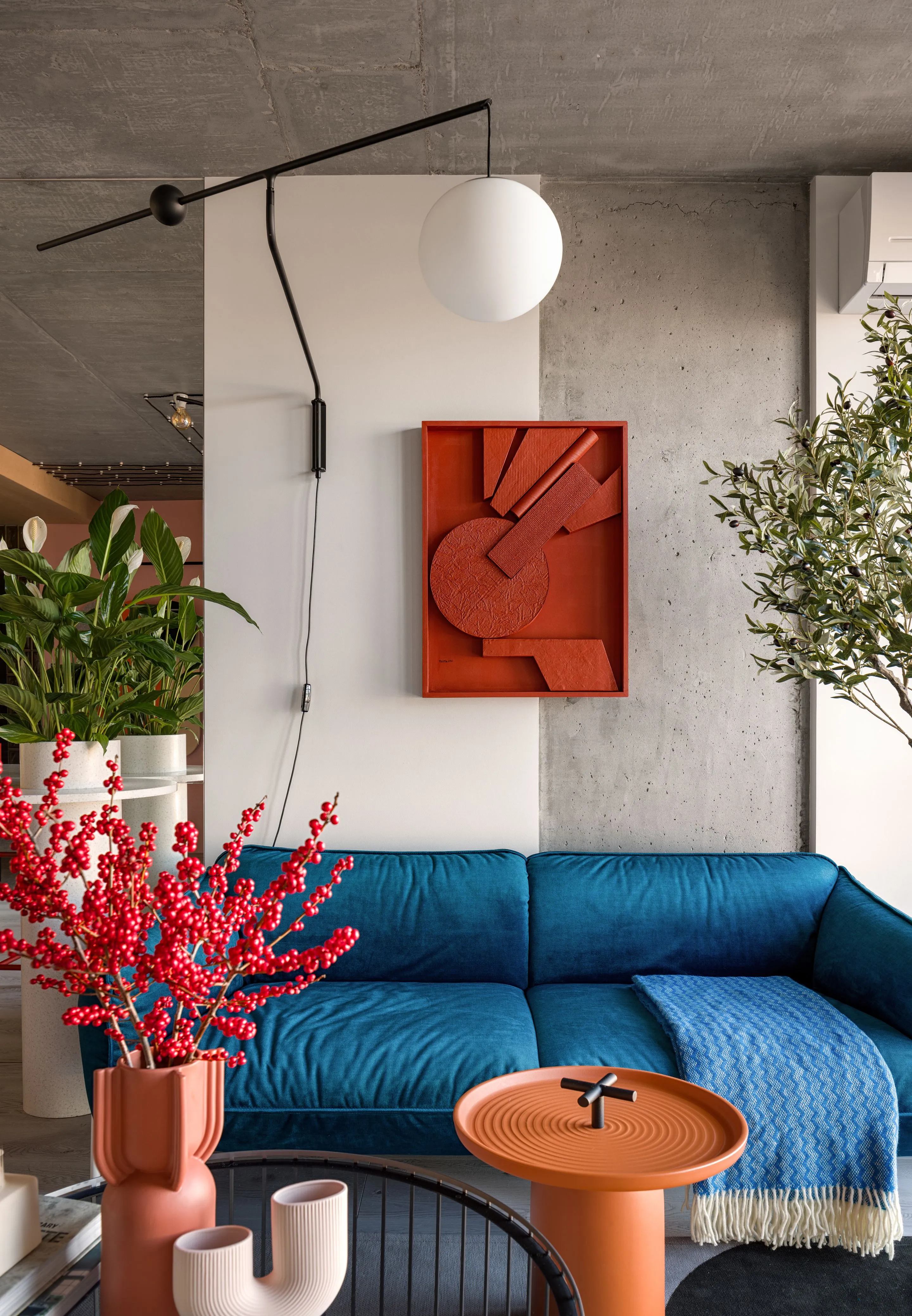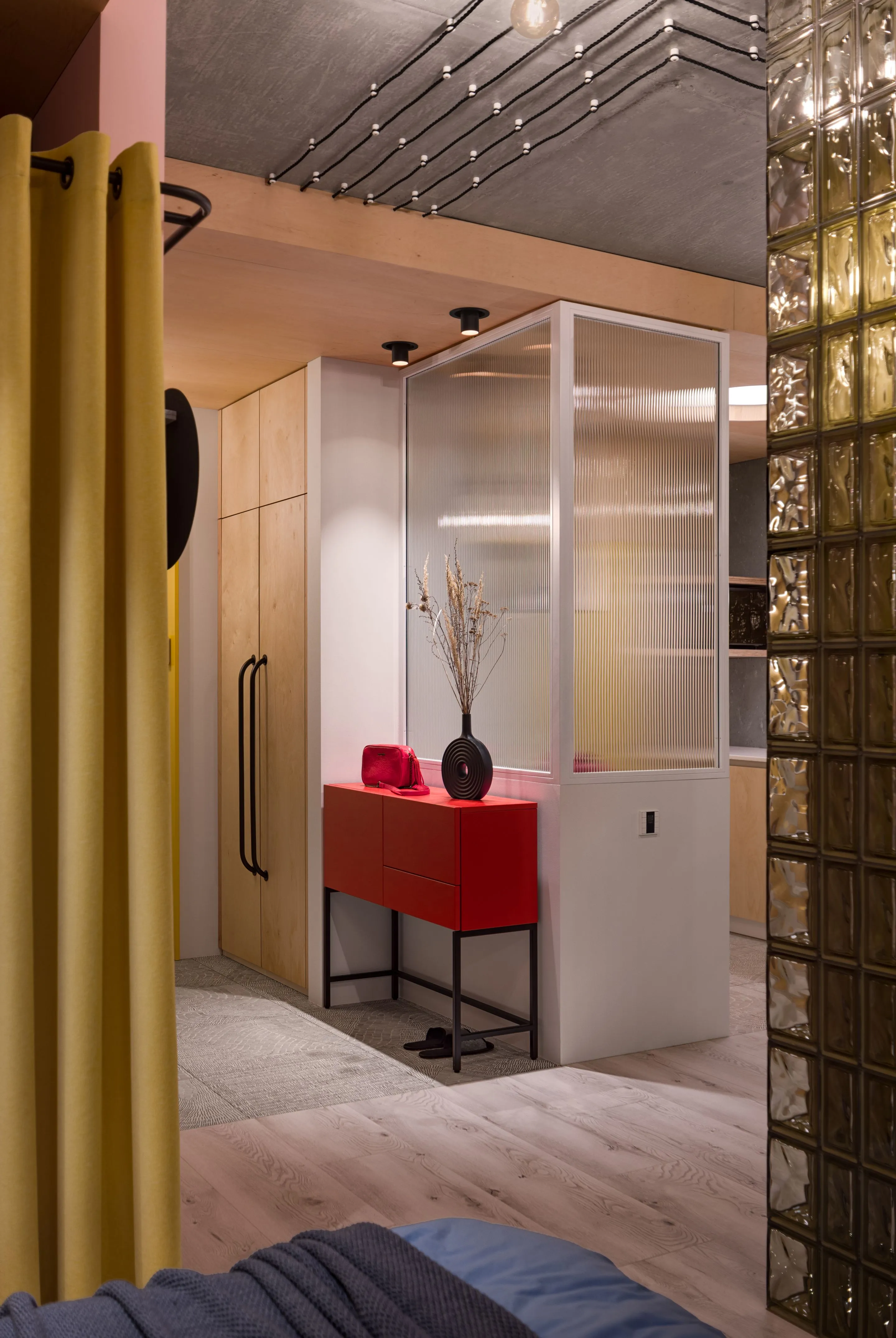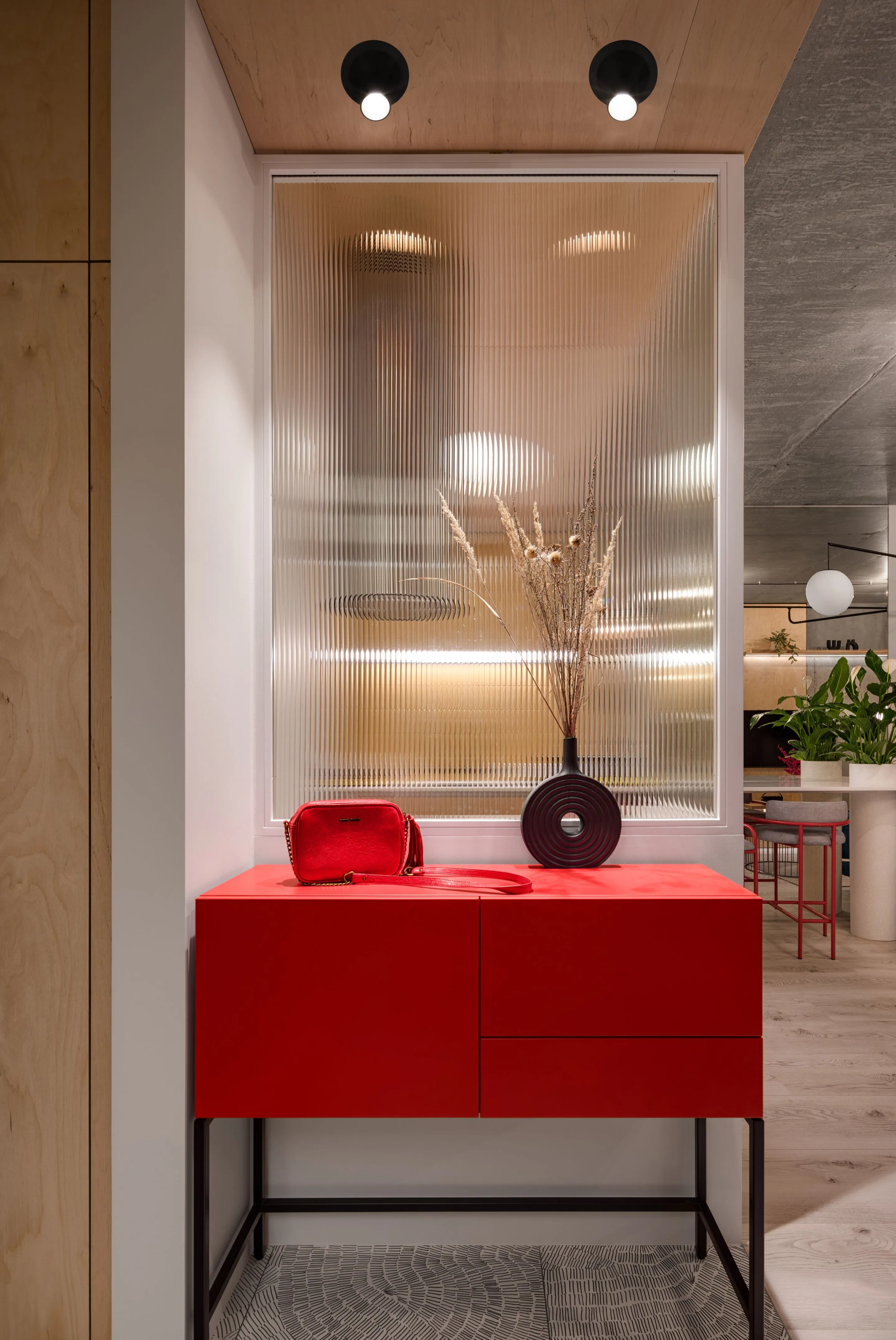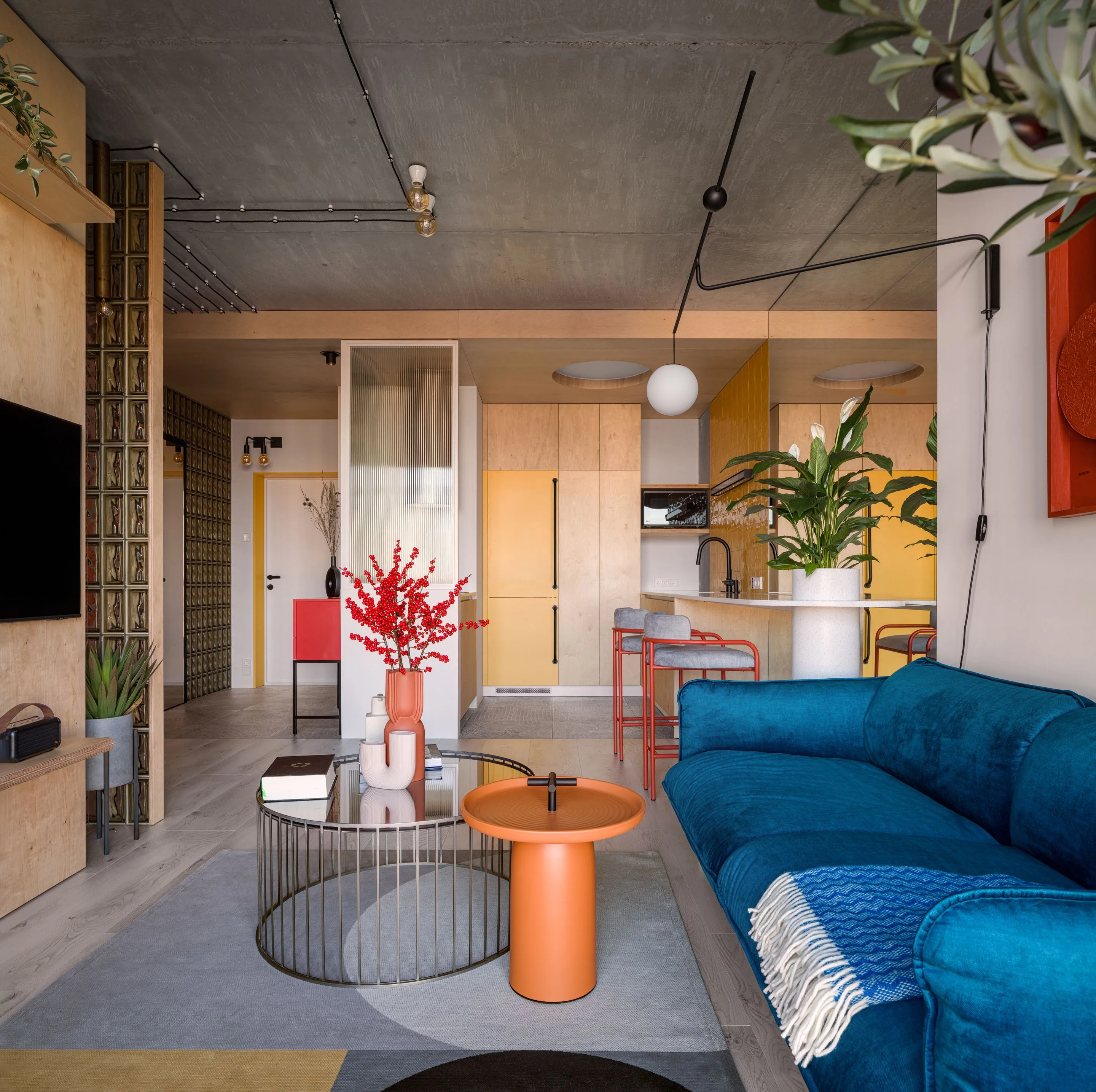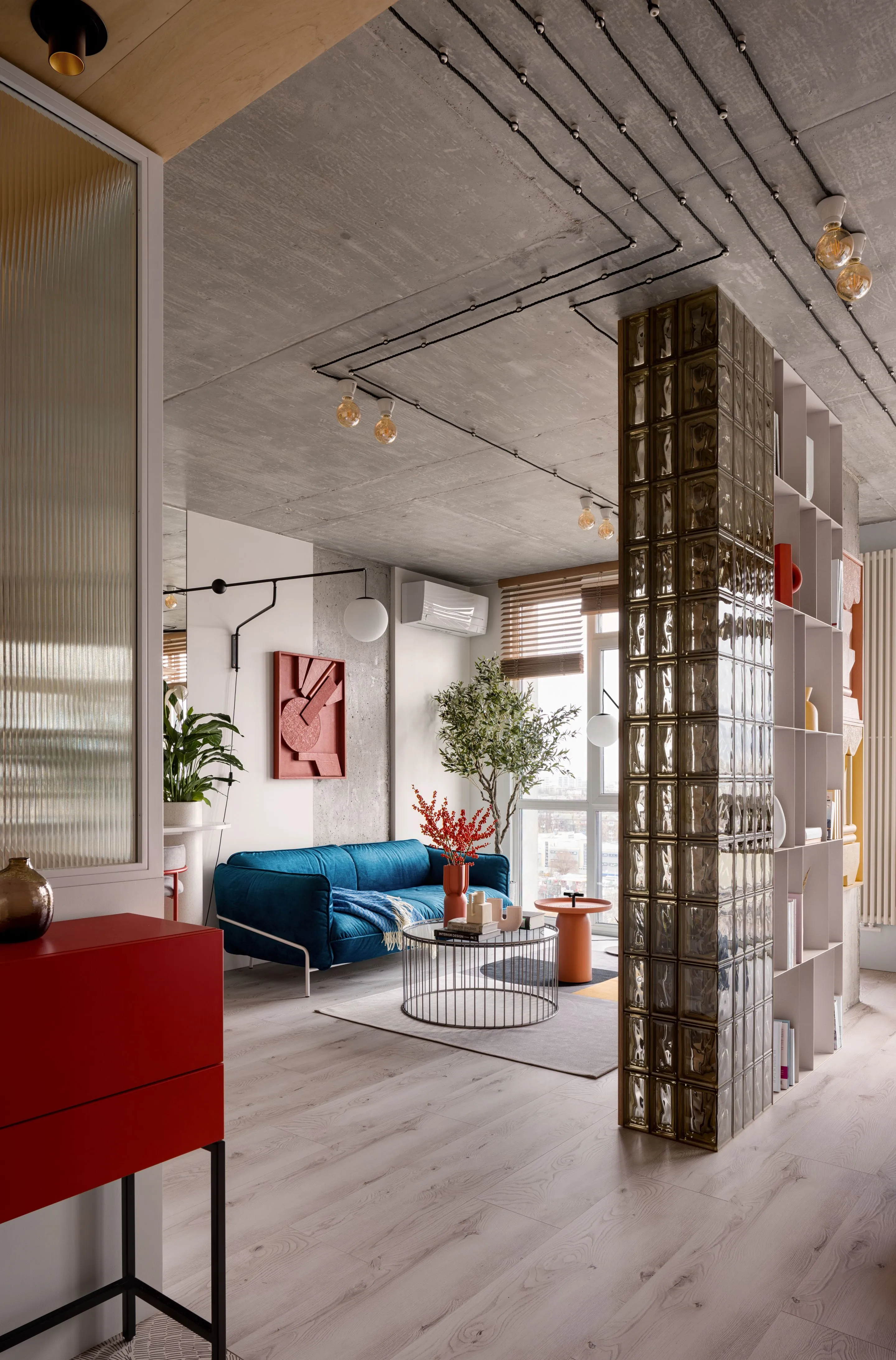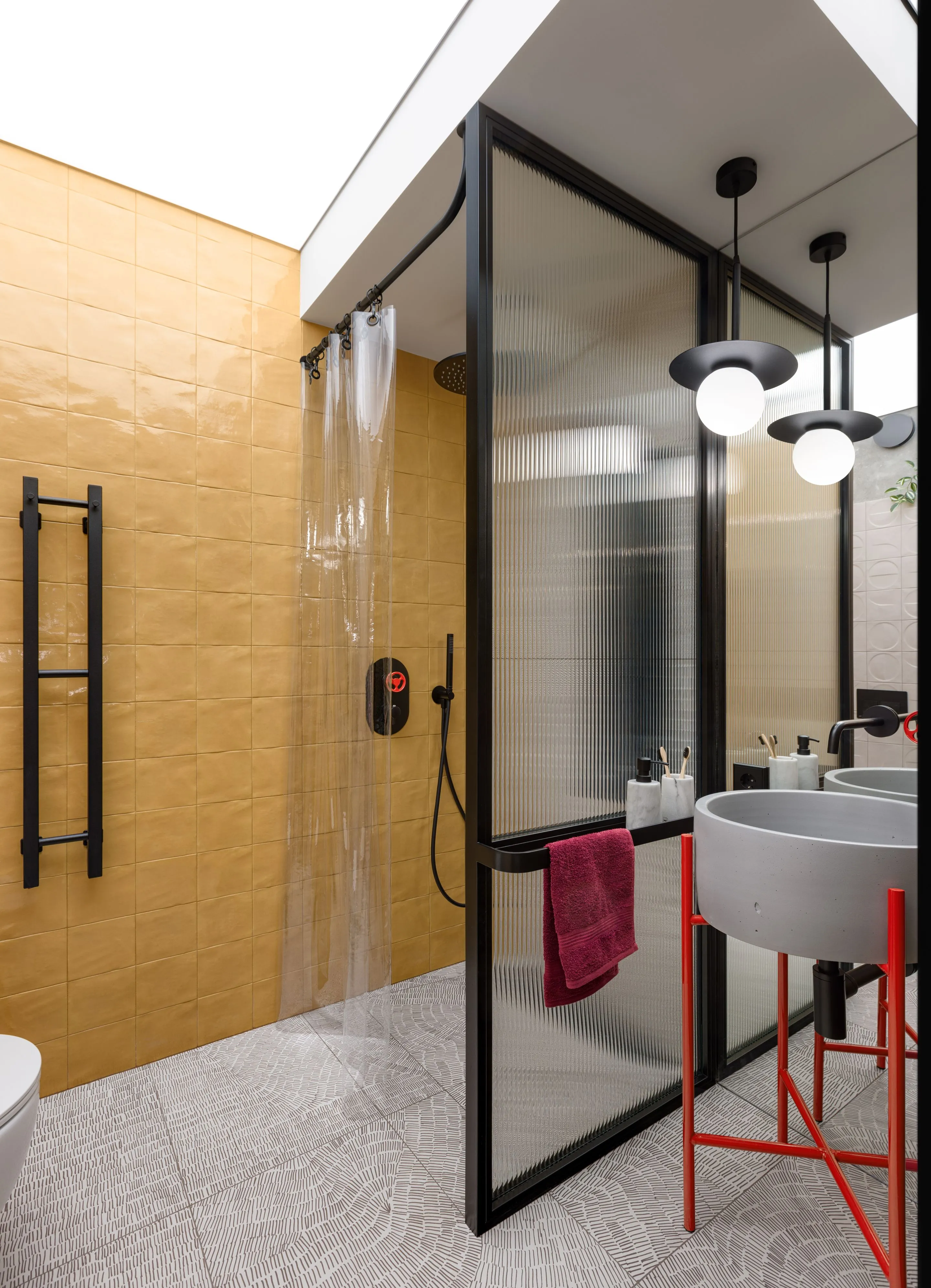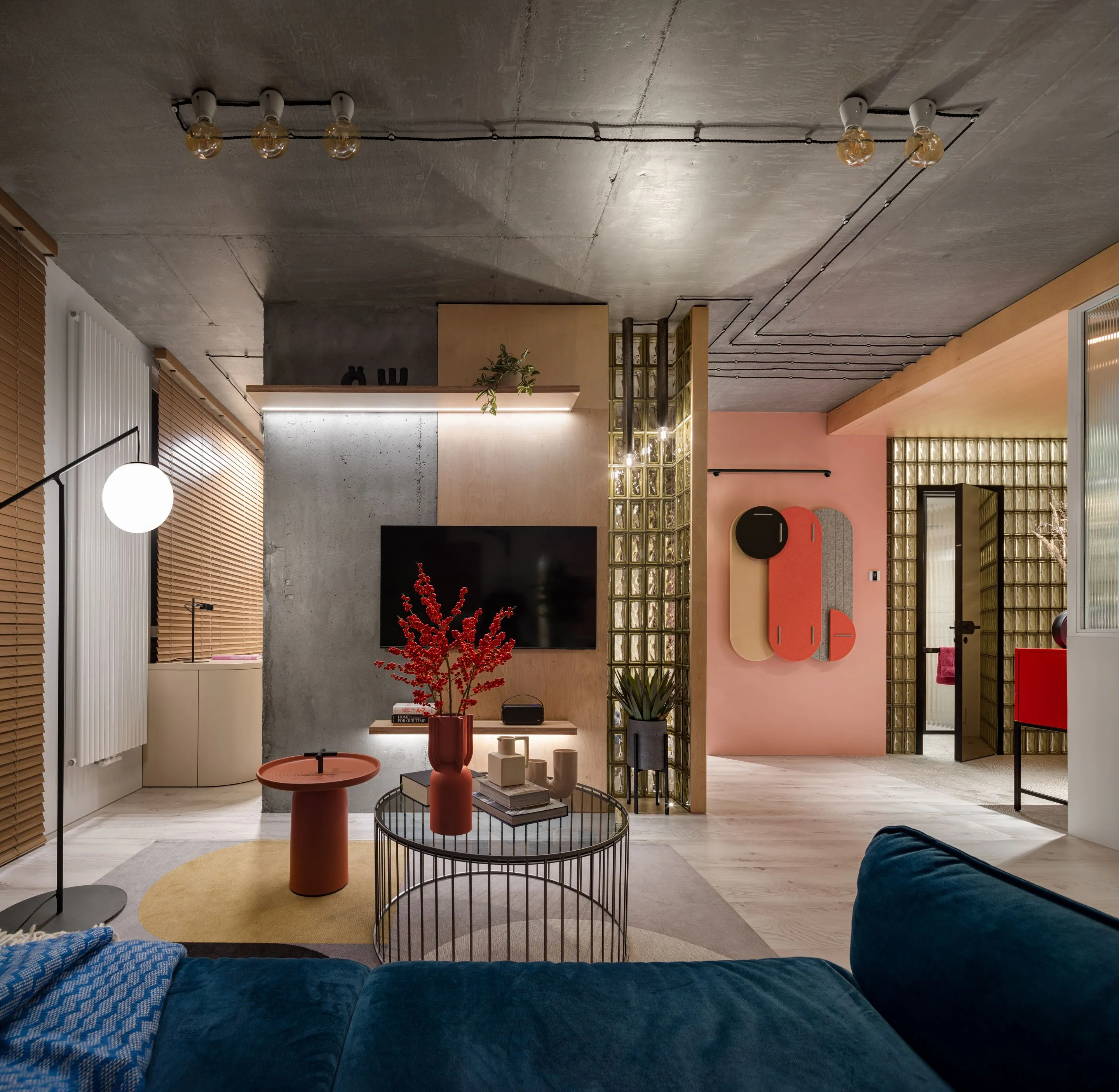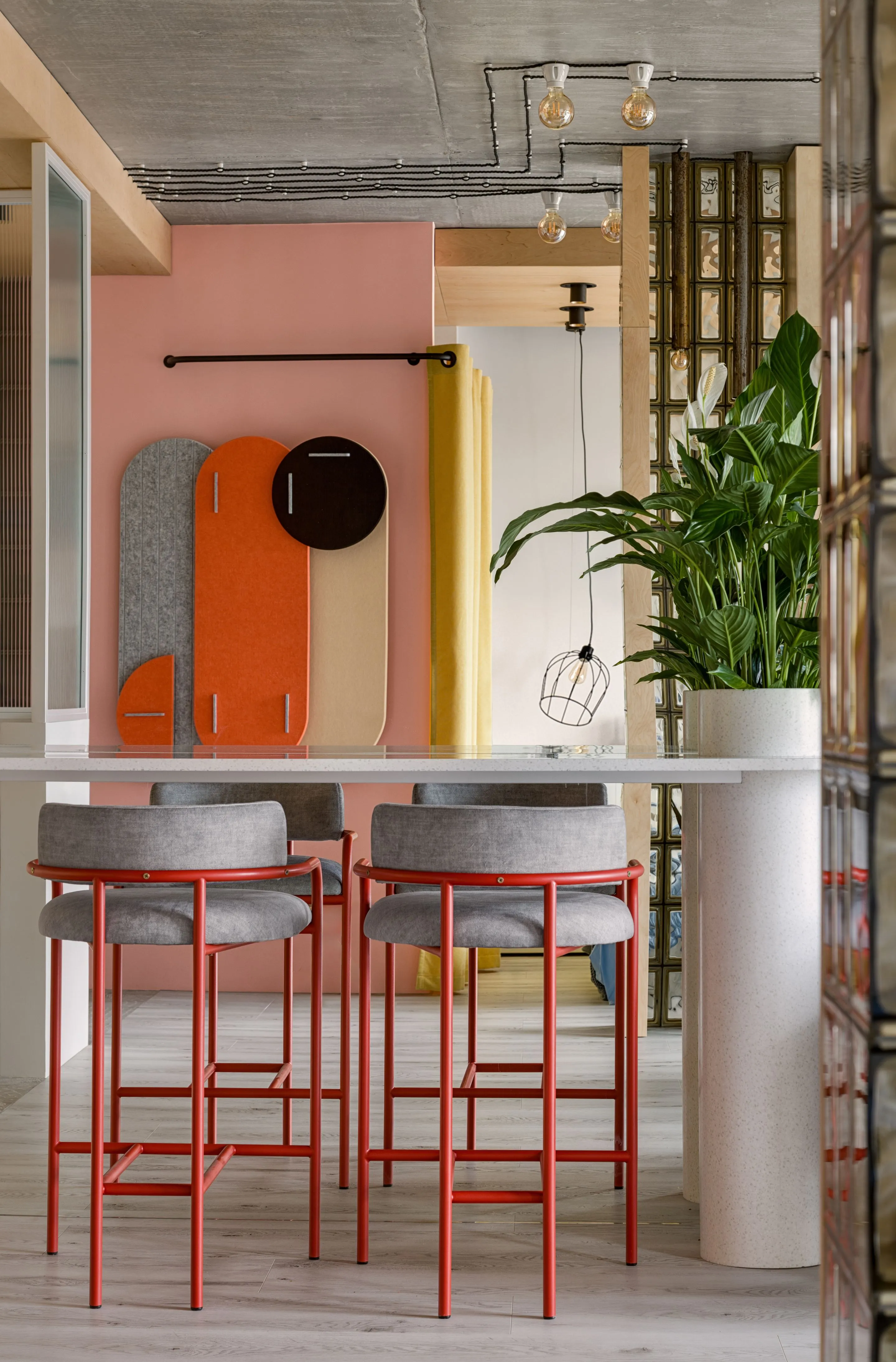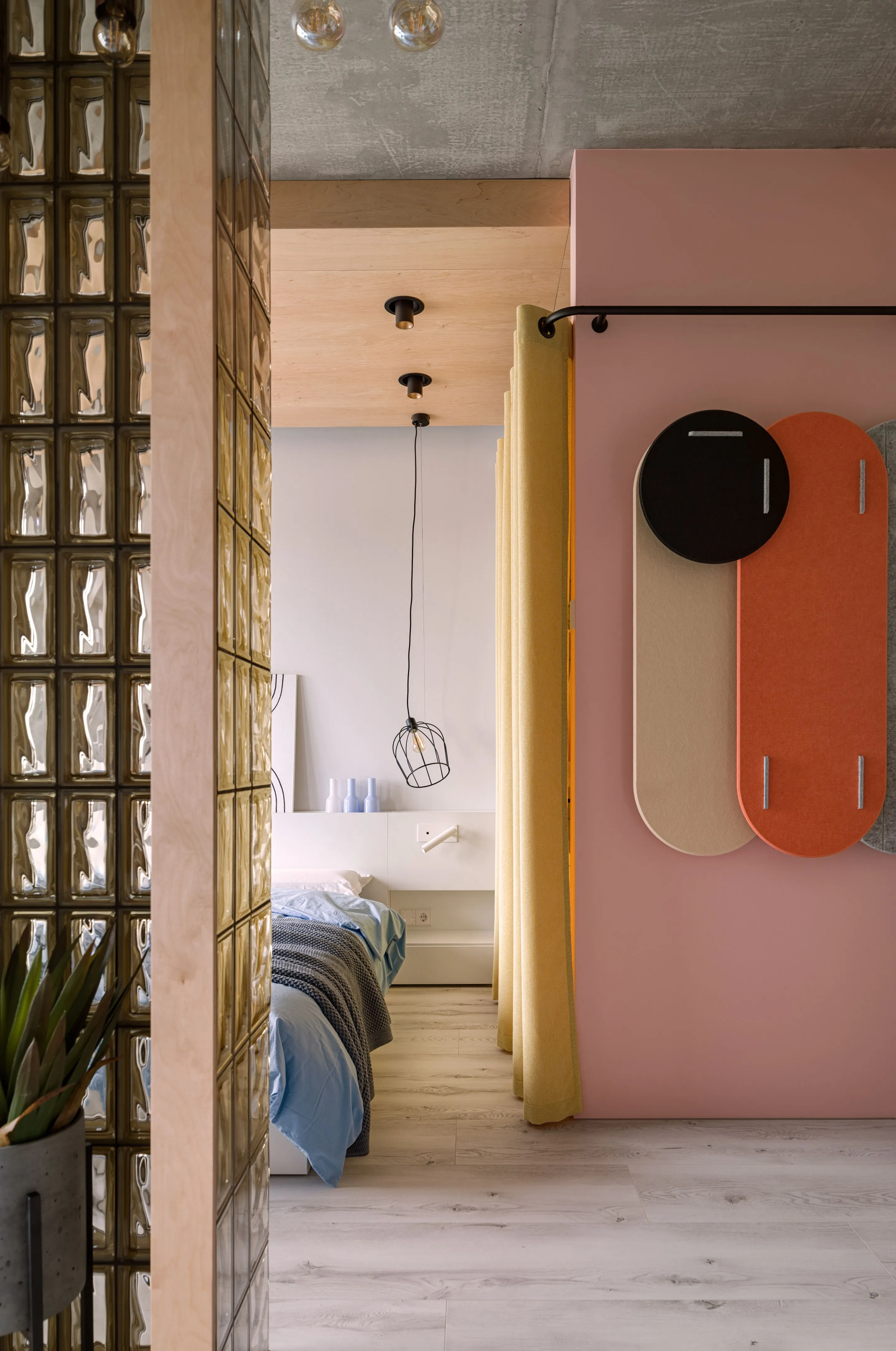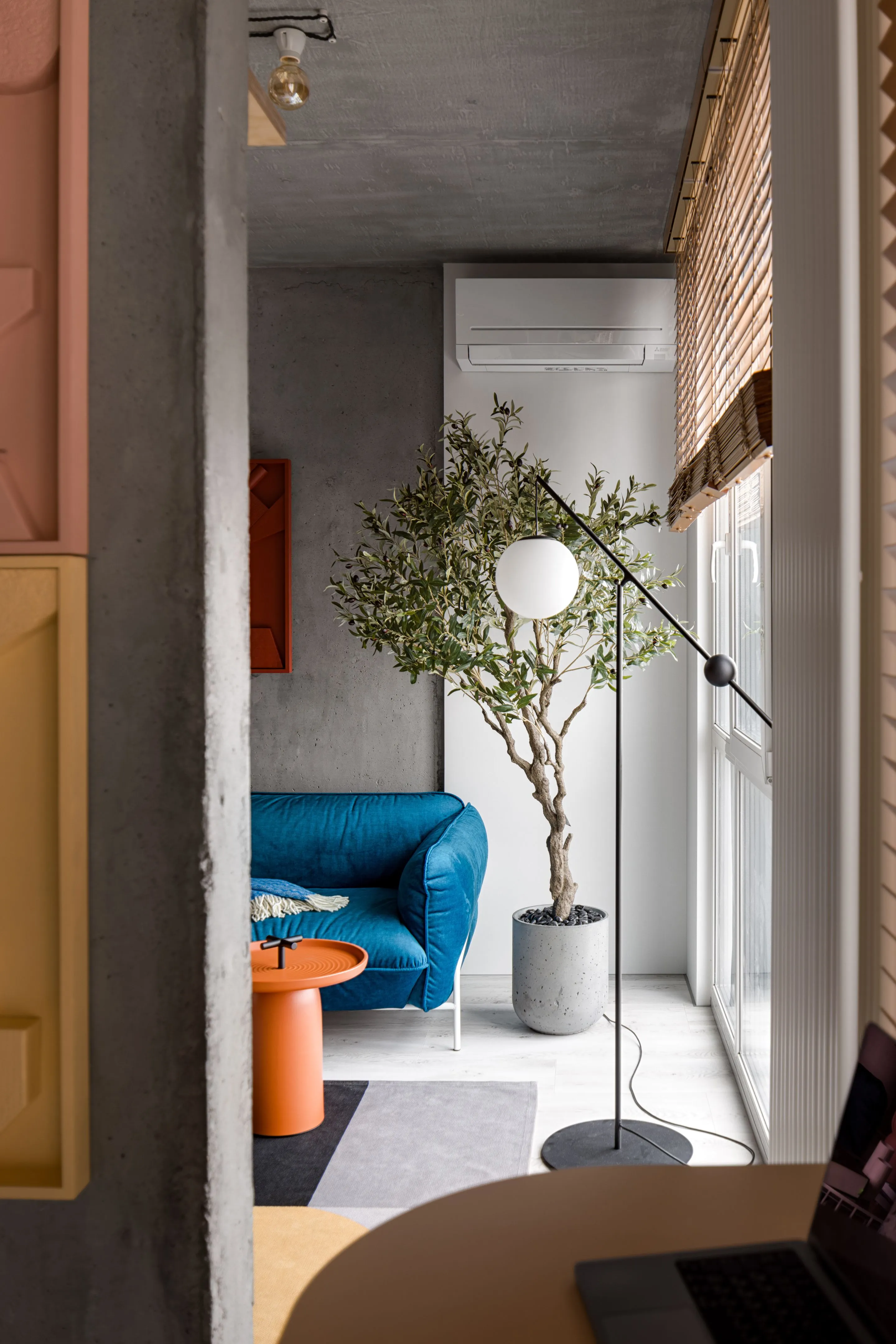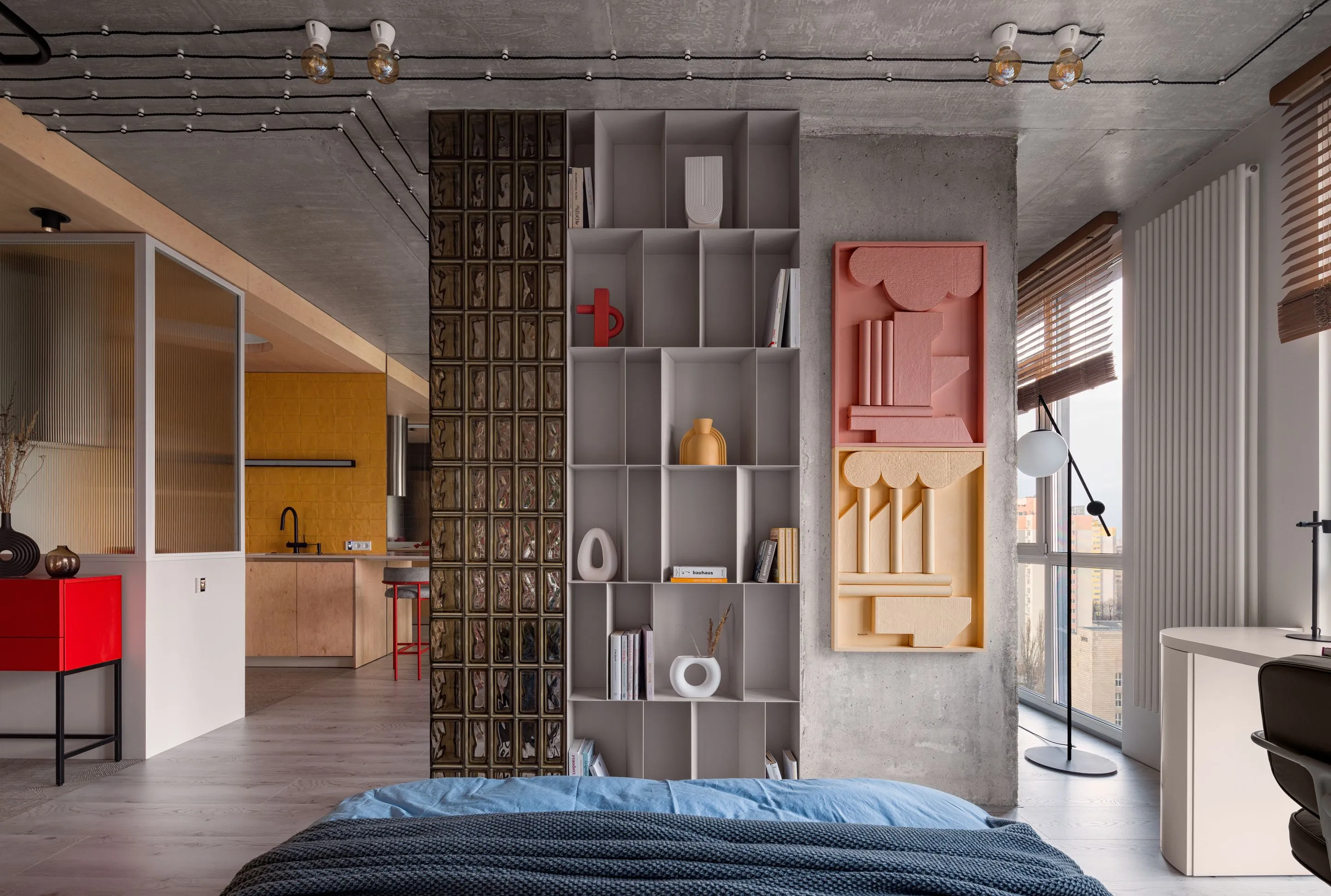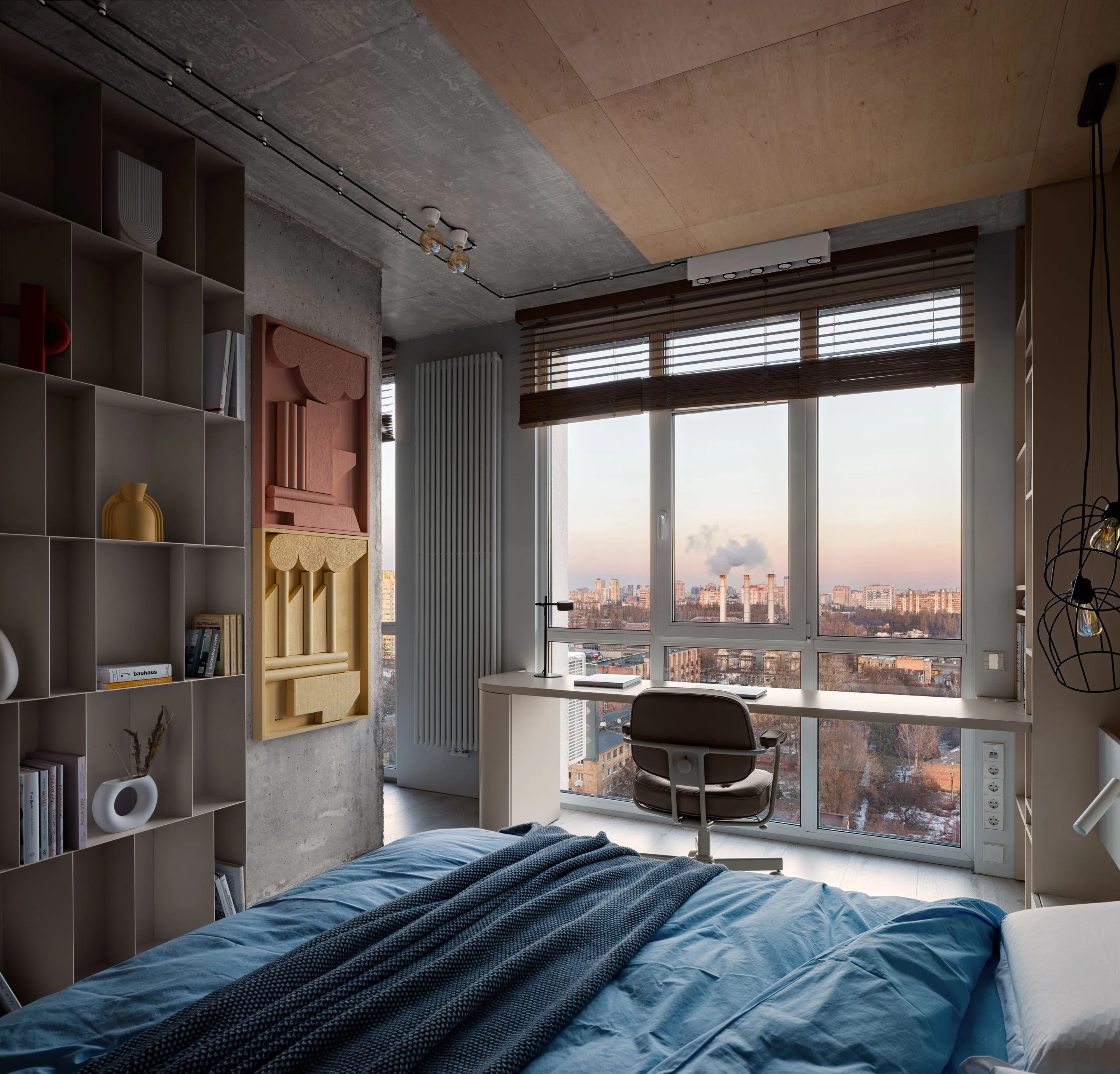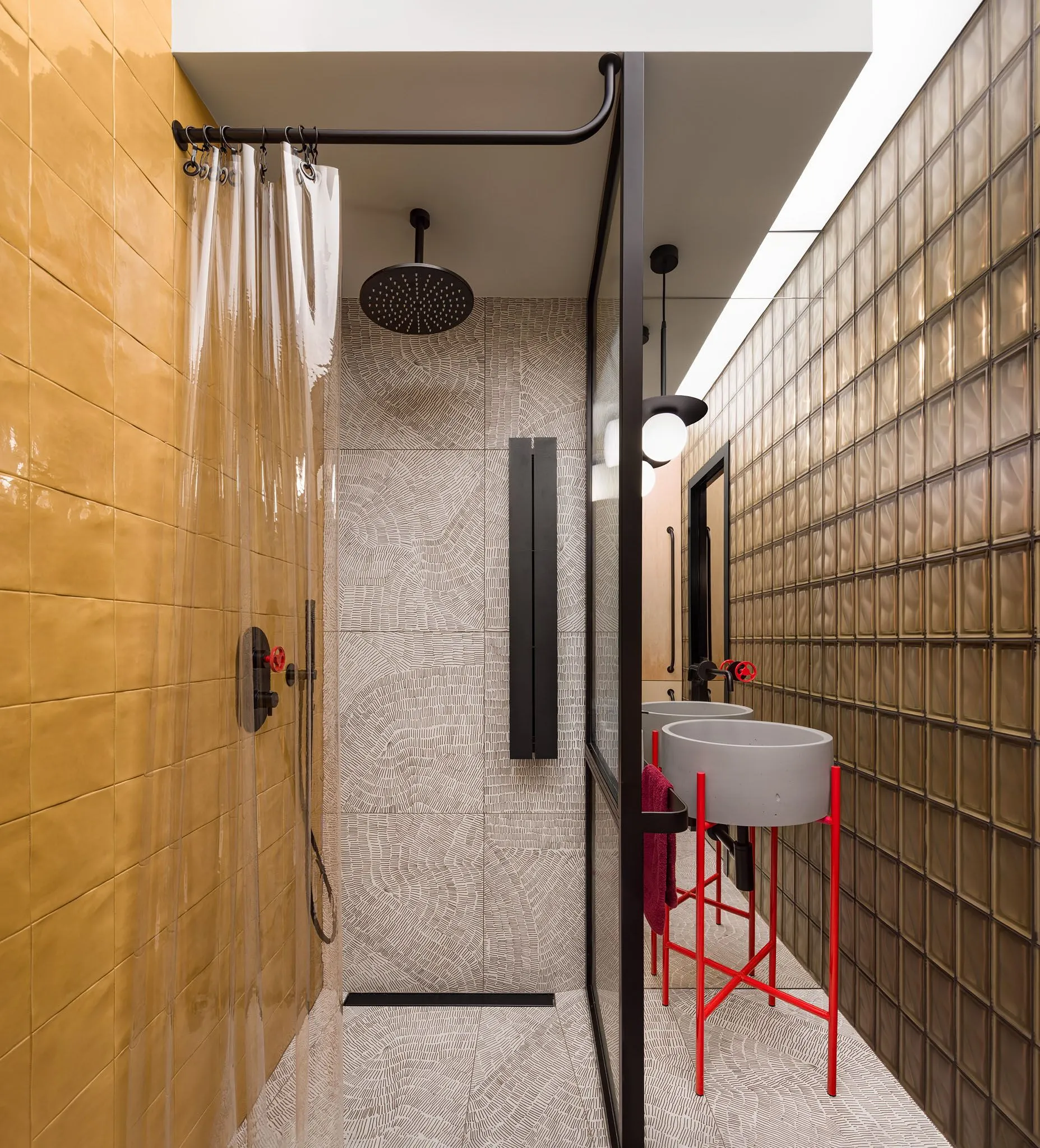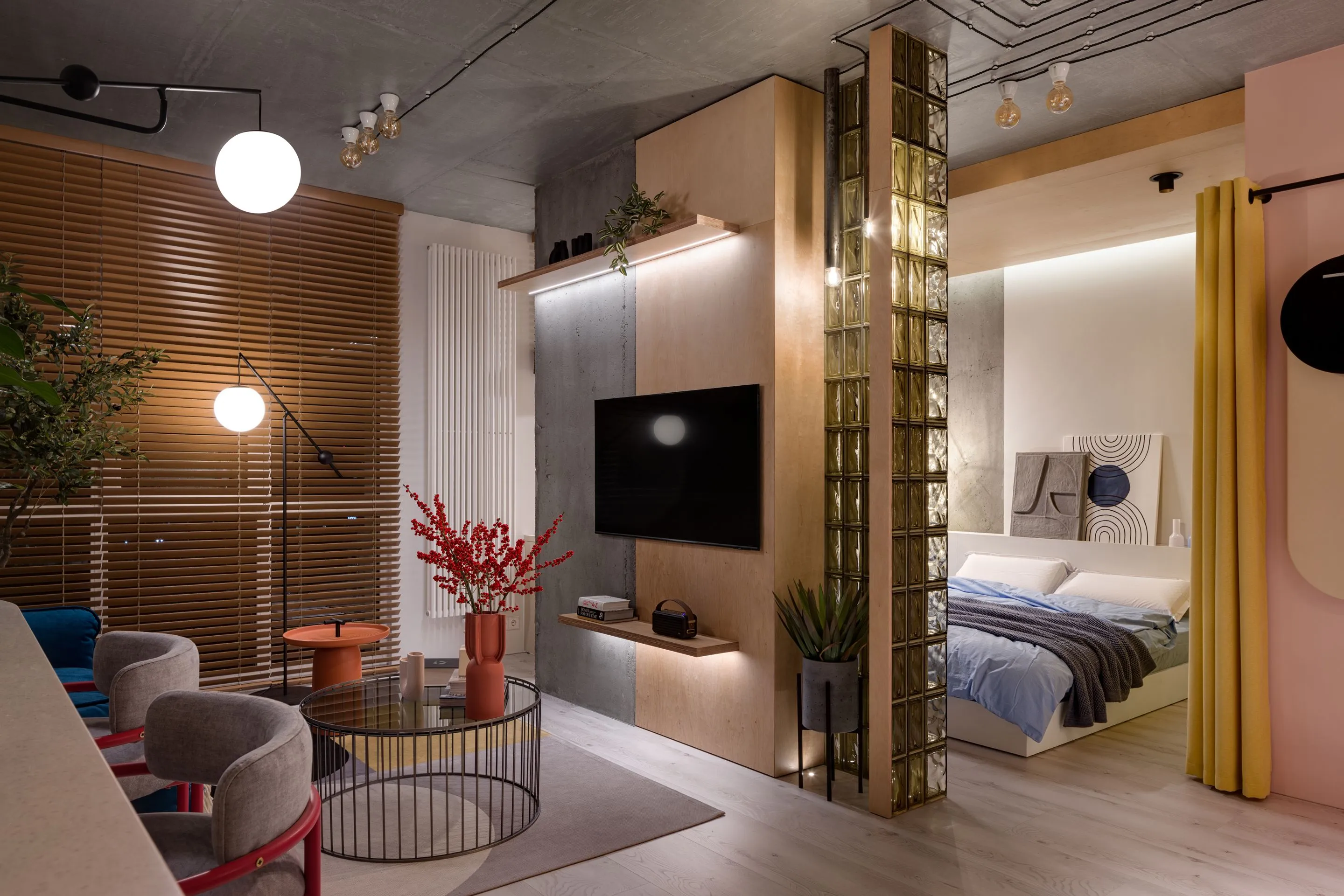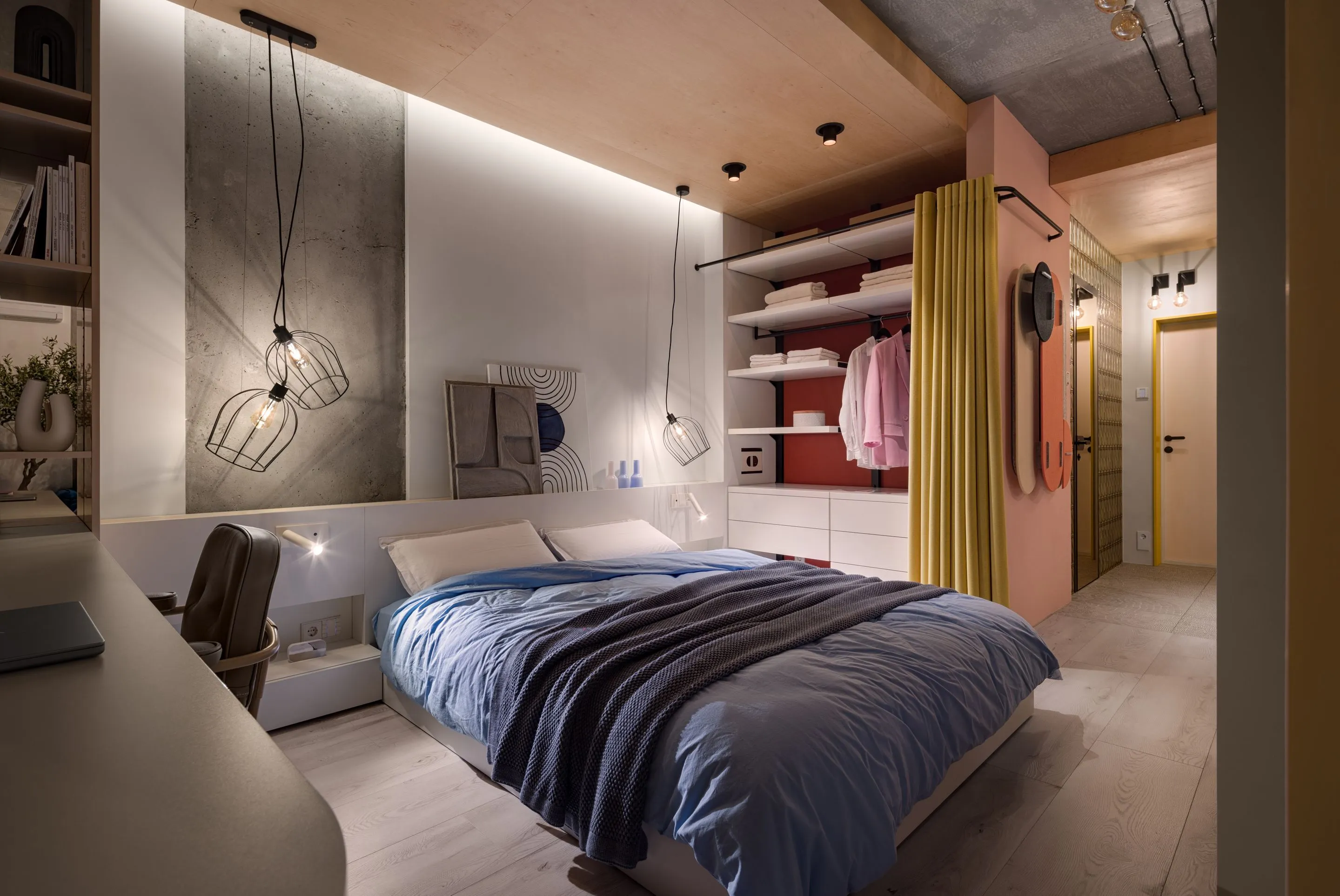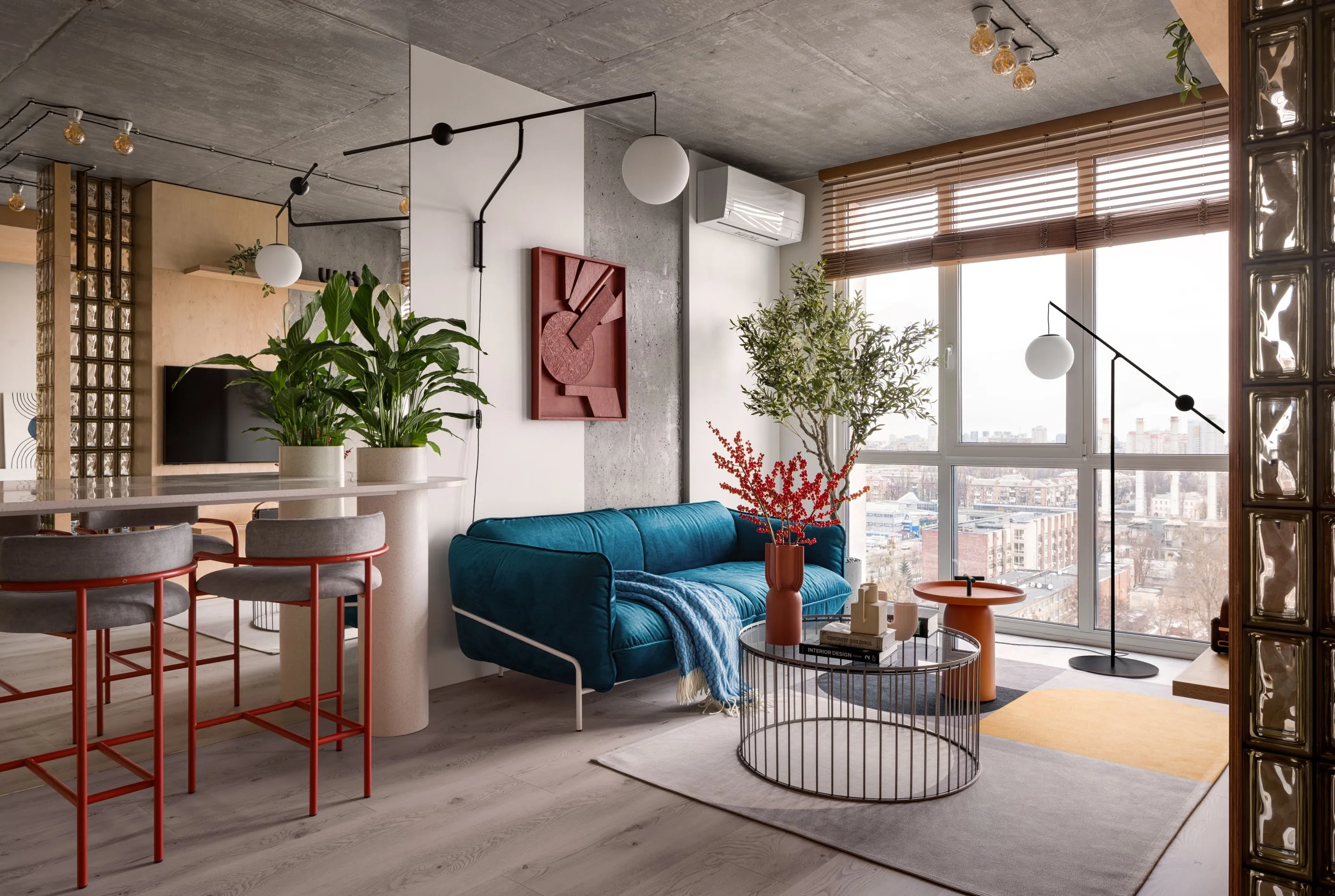
Suprematism
Author:
Yevheniia Sytnik, DIHOME
Nomination:
The best apartment project
Phone:
+380 97 376 26 53
Mail:
Project area:
42 M! 2
Photographer:
Andriy Avdeienko
Website:
dihome.com.ua
The accommodation was intended for a young couple in the style of the Ukrainian avant-garde, so from the beginning it was clear: this is where there is an opportunity to embody bold planning ideas, use cool new materials, add color. Suprematism was the starting point. In my opinion, this avant-garde art direction, which was born in Ukraine a hundred years ago, today continues to inspire creators from all over the world. The main task of the customer was to create a modern and bright space with the most functional use of space. A separate wish was to integrate the “smart home” system, which allows remote control of heating and lighting, as well as the “anti-flood” system
I wanted to “dress” the interior modernly, boldly; to give it a young relaxed mood. Excellent mutual understanding with customers made it possible to realize this idea 100%. A great example in practice, when trust in the designer, feedback and cooperation provide maximum ease for all participants in the process - and the perfect result in the result.Panoramic windows to the floor are the decoration of this apartment. Thanks to the high floor and the picturesque Kiev landscape, the interior seems larger, more spacious. We decided not to burden the windows with textiles, and decorated them with wooden shutters.Art always gives the interior a new, deeper dimension. And this property is inspired by the art of artist Tasha Oro. Tasha works with recycling, considers herself a direct heir of the Ukrainian avant-garde, in particular Suprematism, explores and reinterprets the phenomenon of Ukrainian Soviet modernism, experiments with sculpture and monumental reliefs. Her upcycled panels from the Monumental series impressed me. The panel plots were strangely suited to the urban landscape outside the window! It literally seemed that they were depicting him. Separately, I should mention the selection of materials. Glass blocks, plywood, concrete are the DNA of this project. One of the distinctive elements of the decoration are glass blocks (in the living room, the bathroom wall) and corrugated glass (the space between the hallway and the kitchen, the shower). This solution allows you to clearly zone the room, while leaving maximum access to daylight.
Ceramic tiles of all decoration most resonates with the style and shades of the Tasha Oro panel. Suprematic motifs of tiles in the bathroom and the juicy yellow kitchen “apron” are complemented by the graphic rhythms of clay porcelain.
One of the “chips” of the interior is open electrical wiring on concrete. A small quote from industrial aesthetics, as well as additional graphics for a more interesting ceiling pattern.Concrete relief and graphic panel in the headboard are my work, and my gift to customers. A good sign when, at the end of the cooperation, the designer has a desire to thank the owners of the property for their support and counter movement at all stages of the project.
The apartment from the developer, we freed from unnecessary walls, opening all the space for daylight. Only the bathroom remained a separate volume. I wanted to find a feeling of free and incessant movement: continuous air, no dead ends. Thus, we got a studio where the kitchen is located in a niche of the living room, and is part of it, and the bedroom separates the functional space from the living room. This volume assimilates the structural element of the building — the concrete pillar — and is a kind of axis of the entire interior. On the side of the bedroom we designed the shelving; on the living room side — the TVZone. Another accent solution in the layout of the apartment is a wardrobe behind a sliding curtain in the bedroom. It's like a superpower: small-sized housing needs storage systems so much! If we talk about square meters, this space is a real example of careful “cutting out”, where the count goes to centimeters. This is how we worked out the kitchen, the bathroom. On the verge of total space savings and balanced ergonomics. In this sense, the workplace is iconic for the project. The table-rack unit is located in the bedroom, mounted close to the panoramic window, and as if dissolves in the landscape. And, of course, the kitchen: the dining table is a continuation of the work surface, and therefore does not occupy a separate place. Also in the struggle for space, we used a classic, but such an effective move: the mirror wall. The interior is doubled, at least in terms of feel.
Panoramic windows to the floor are the decoration of this apartment. Thanks to the high floor and the picturesque Kiev landscape, the interior seems larger, more spacious. We decided not to burden the windows with textiles, and decorated them with wooden blinds.
One of the “chips” of the interior is open electrical wiring on concrete. A small quote from industrial aesthetics, as well as additional graphics for a more interesting ceiling pattern.
In addition, the apartment has a Smart Home system, which allows you to remotely regulate the operation of the refrigerator, boiler, heating and some sockets, as well as the anti-flood function with appropriate sensors in “wet” places. Heating is provided by a designer radiator and a warm floor throughout the apartment.
An interesting element of the decor is the acoustic panel located in the hallway, made from recycled plastic bottles. Practical and at the same time visually effective decorative solution. Surface made of acoustic material Re:Quiet in the form of several geometric shapes of rounded shape. It brings color and comfort to the interior, and also performs the function of absorbing noise.
The apartment features three designer decorative panels by Tasha Oro, which are almost identical to the landscape opening from the window, reinforcing the industriality of the interior. Tasha works with recycling, considers the Ukrainian avant-garde, in particular Suprematism, as her source of inspiration, experiments with sculpture and monumental reliefs. In our oversaturated world, recycling is the most ethical and potential way to create. Even in art. Especially in art. In her work, she uses details of the Soviet car industry, fragments of household appliances, old ceramics and porcelain, waste of furniture production, used mailboxes, etc.
